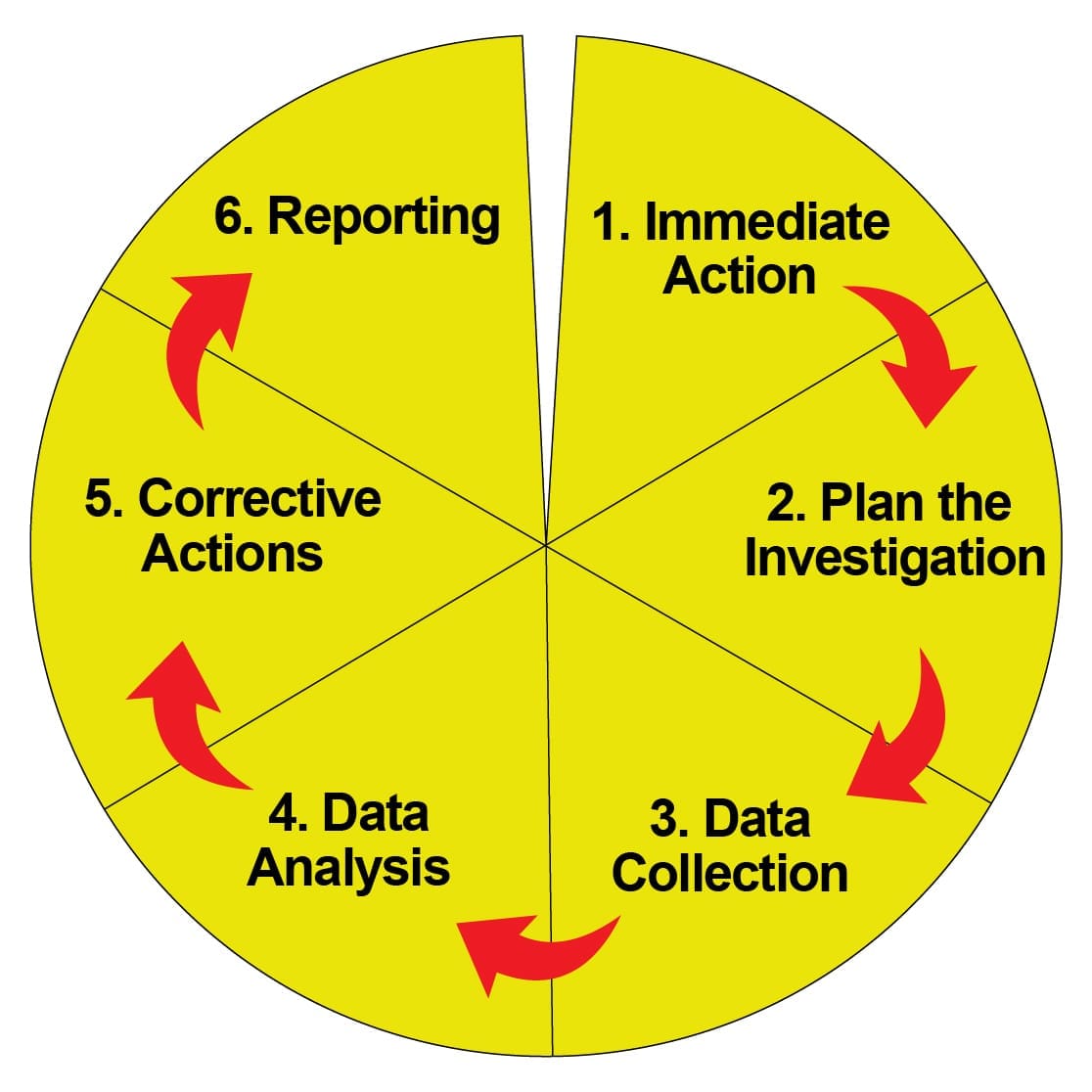6 STEPS FOR SUCCESSFUL INCIDENT INVESTIGATION
“What happened, and what can we do to prevent this from happening again?”

Growing Sophistication
Accident Investigation & Reporting has become more sophisticated in recent years, mirroring the growing sophistication of Safety Management Systems. As safety management becomes more advanced the need for a more sophisticated investigation becomes obvious.
The misguided Role of Blame in Accident Analysis
In the past, the usual reason for conducting an accident investigation was to simply assign blame for the loss instead of understanding why it happened so that future accidents can be prevented.
When the goal is to assign blame, the backward chain of events considered often stops when someone or something appropriate to blame is found, such as the maintenance worker at Bhopal, India 1984 (Union Carbide 3000 deaths) or the operators and failed gauges and indicators at a refinery.
Utilise these 6 Steps for Successful Incident Investigation
A six step, structured approach to incident investigation helps to ensure that all the causes are uncovered and addressed by appropriate actions.
Step 1 – Immediate Action
In the event of an incident, immediate action to be taken may include making the area safe, preserving the scene and notifying relevant parties. The accident investigation begins even at this early stage, by collecting perishable evidence.
Step 2 – Plan the Investigation
Planning ensures that the accident investigation is systematic and complete. What resources will be required? Who will be involved? How long will the investigation take? For severe or complex incidents, an investigation team, including an outside third-party will be more effective than a single investigator.
Step 3 – Data Collection
Information about the incident is available from numerous sources, not only people involved or witnesses to the event, but also from equipment, documents and the scene of the incident.
Step 4 – Data Analysis
Typically, an incident is not just a single event, but a chain of events. The sequence of events needs to be understood before identifying why the incident happened. Keep asking why to identify the root and underlying causes, as well as the direct causes.
Step 5 – Corrective Actions
Many investigations make the mistake of raising actions which deal only with the direct causes – a quick fix, putting last-lines-of- defence back in place. By ignoring the root and underlying causes, not only do they miss an opportunity to reduce the risk of recurrence of the incident, but they also leave open the possibility that other, dissimilar incidents may also occur, arising from the same, common root cause.
Step 6 – Reporting
The investigation is concluded when all outstanding issues have been closed out and the findings have been communicated so that lessons can be shared. Communication mechanisms include formal incident investigation reports, alerts, presentations and meeting topics.

